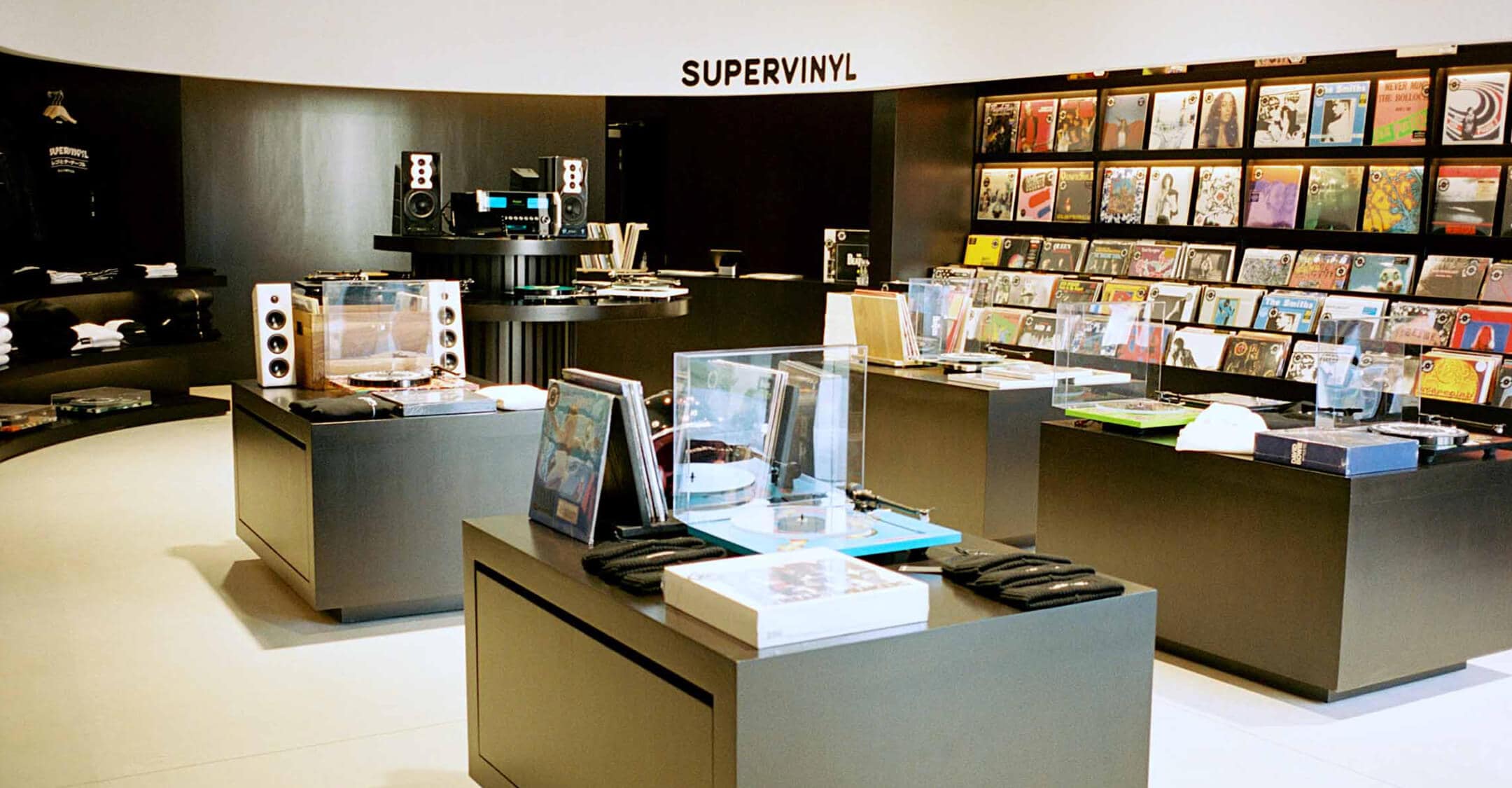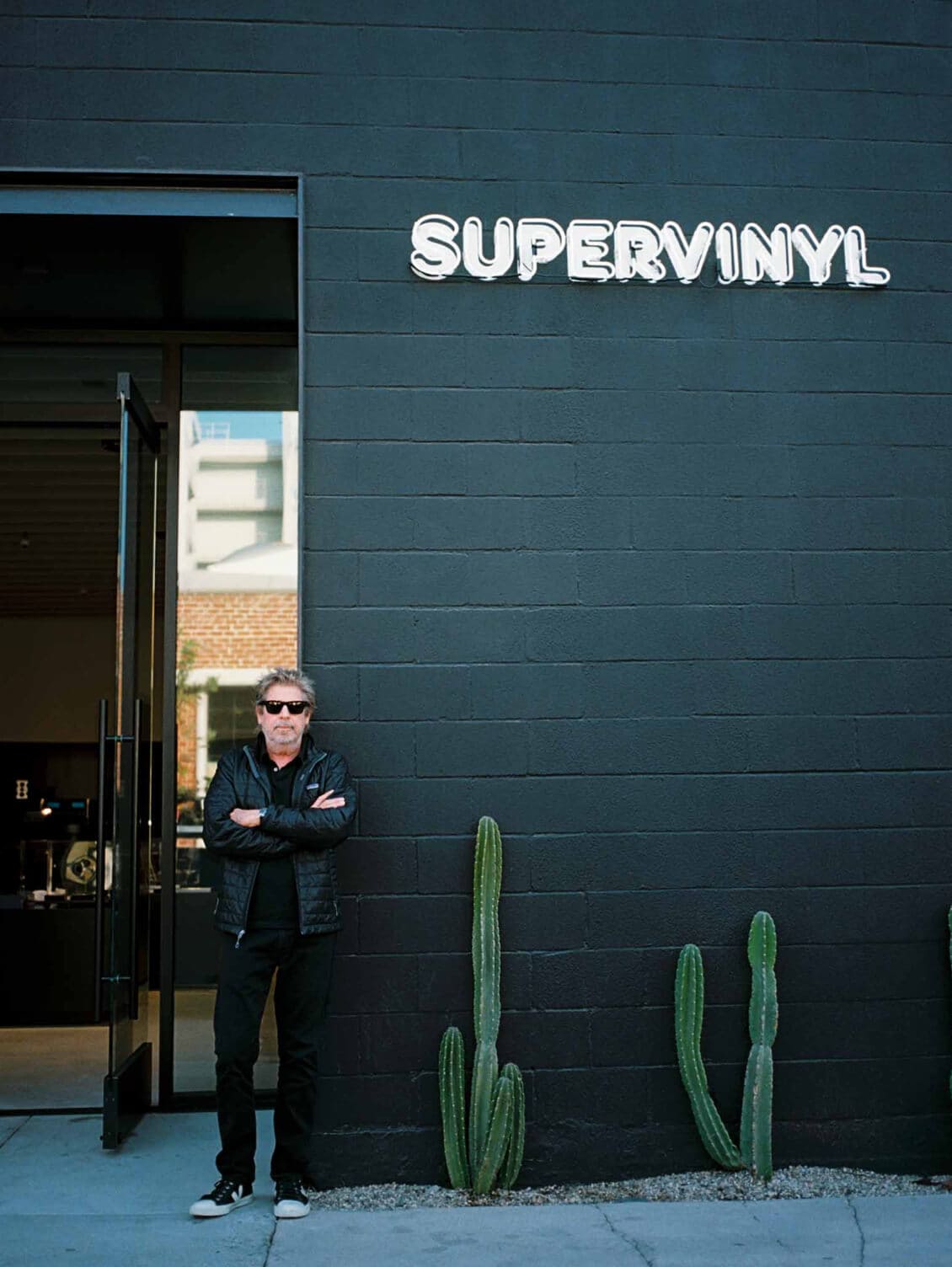Oliver Peoples visits Supervinyl and talks with owner, Barry Perlman on creating a new experience for listening to vinyl records.
Upon entering Supervinyl, it’s immediately apparent that it is a different kind of record store. It is an auditory shrine of sorts, paying tribute not only to bands and their albums but to the vinyl record format itself. The stereo equipment and the way it is set up is aimed entirely at getting the most out of the vinyl. Why is it worth going through all this trouble to playback recorded sound? Ask any audiophile and they’ll tell you accuracy, which is certainly a big part of the story, but not all of it. The process of making a vinyl record cannot be overlooked and to fully appreciate an album, it’s essential to understand how they’re made.
Supervinyl owner, Barry Perlman wears Oliver Sun in Black with G-15 lenses.
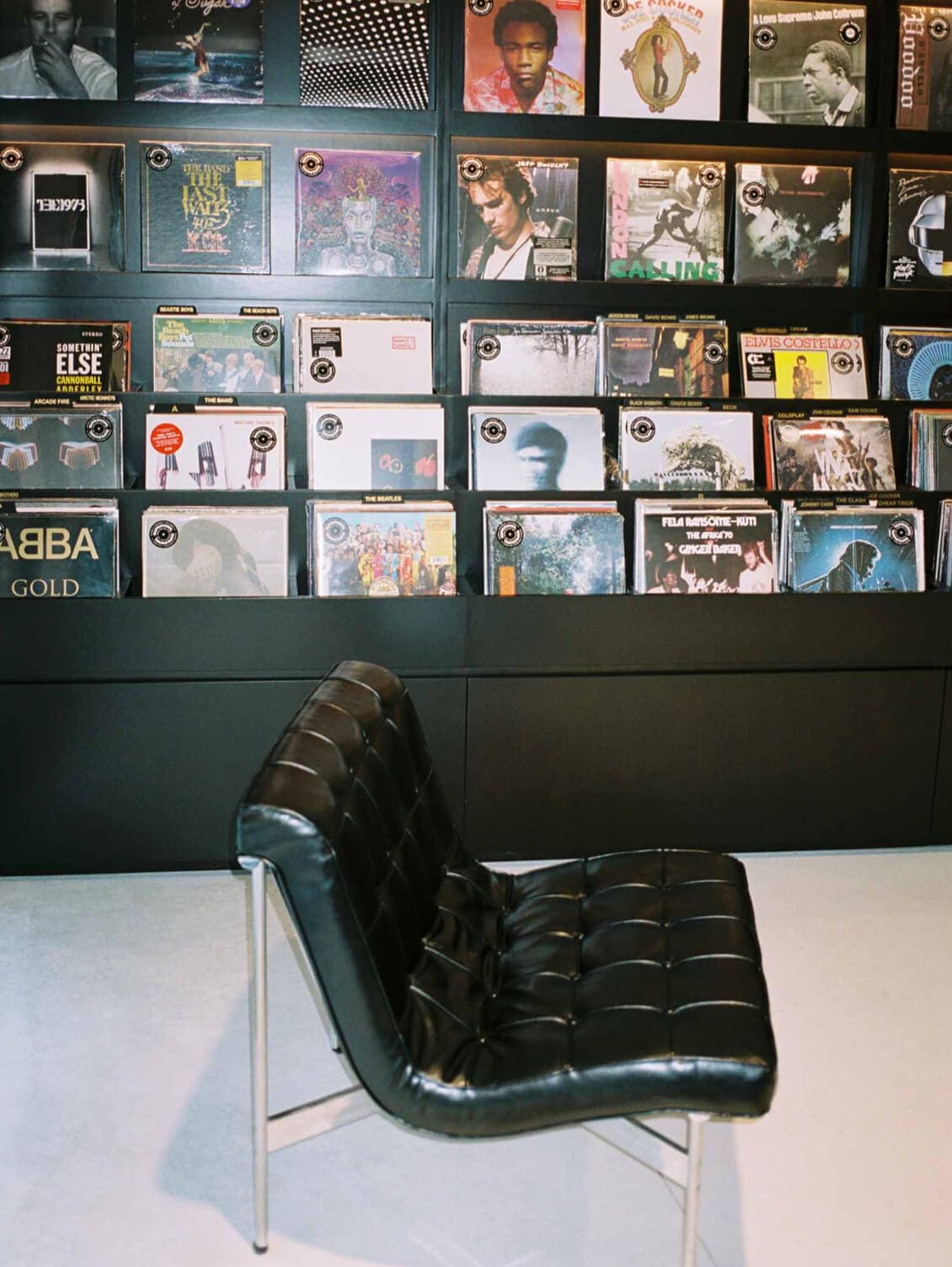
Sit down for a while, and enjoy an unrivaled listening experience.
Before the arrival of modern vinyl in the late 1940s, early records were made of SHELLAC wax, cotton, and slate. These microgroove discs were played at 78 rpm and typically between 10” and 12” in diameter. They could hold between three and five minutes of sound depending on size, and the sound quality was rudimentary. These early 78 rpm records were technically surpassed and quickly became obsolete after Columbia invented the microgroove in 1946. The finer grain of PVC vinyl versus wax vinyl allowed for narrower groves that lay closer together, thus delivering increased sound quality and available playback time. Two years later, Columbia came out with the 12” 33 ⅓ rpm “LP” or Long Play which could hold 20-30 minutes of music per side and boasted sound reproduction dramatically superior to that of 78 rpm records. Today, vinyl records are still produced by using the same process that starts with creating a master vinyl disc at a studio that holds the audio recording that then goes to a manufacturing plant where a three-step process involving chemistry and electricity yields a master, a mother, and stampers which hold the grooves that the needle of a turntable follows. A stamper for each side of a record presses the groves into a freshly flattened vinyl disc that enters the press as a hockey puck of vinyl before it is joined with labels for each side of the record via extreme pressure. When the record comes out of the press, the excess vinyl at the edge is trimmed off and recycled for future use, then off it goes to quality control before being packaged and shipped to a record store, like Supervinyl.
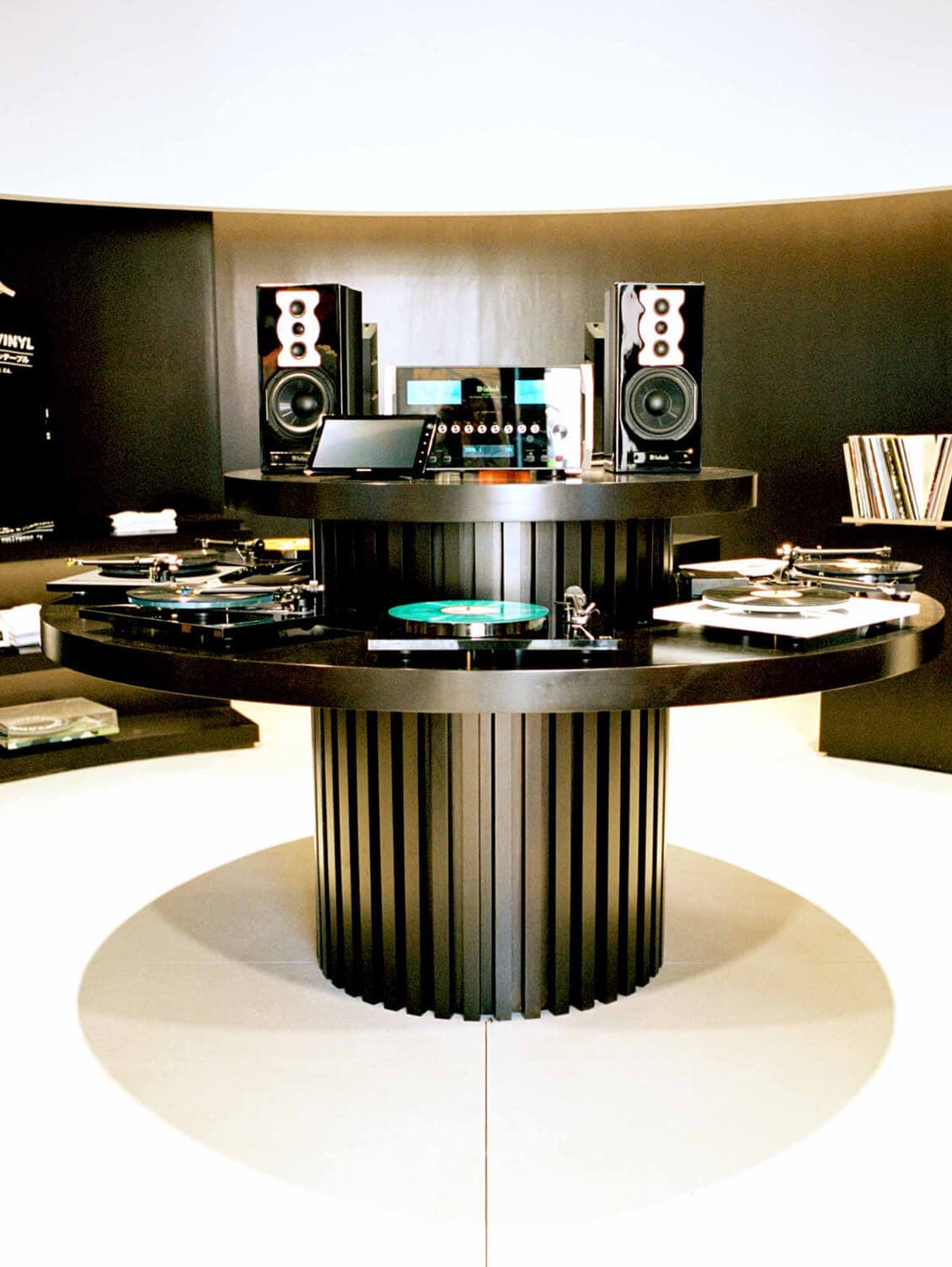
Located at the center of the store, the listening station- a space to listen to your favorite albums with a whole new perspective.
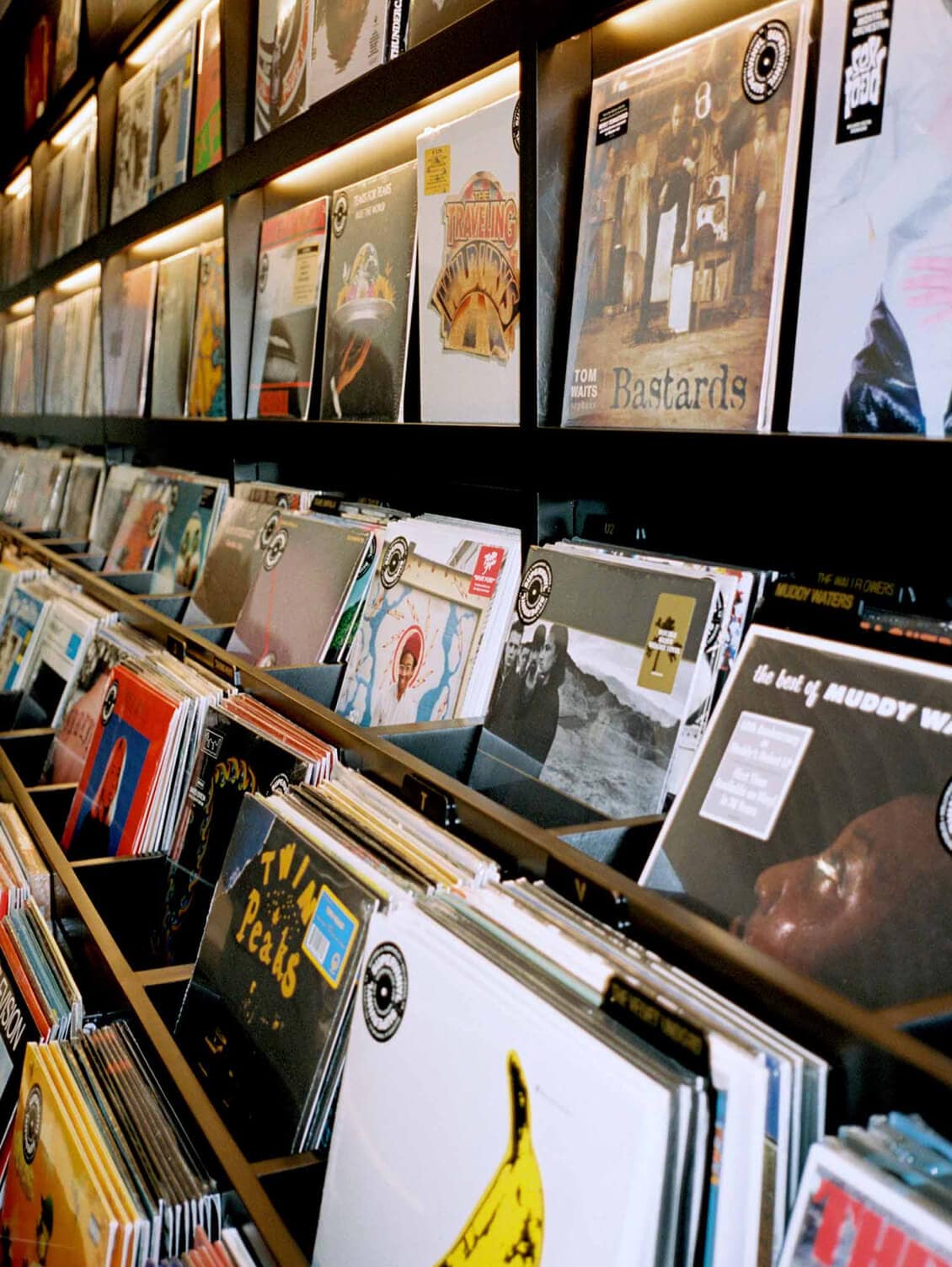
Attention to detail takes on a whole new meaning, at this expertly curated store.
Except that there’s only one Supervinyl and that’s because there’s only one Barry Perlman. The store is a direct reflection of Barry’s tastes and sensibilities, which, fortunately for music lovers, are well suited to the enjoyment of vinyl records. Supervinyl is a modern take on a record store instead of your typical storefront. “I wanted to set up the vinyl displays more like an art gallery so you can see more of the album art rather than have them stacked in bins where the art is hidden.” The layout of the store is clean and well organized, not at all intimidating like so many other purveyors of vinyl. Albums are neatly arranged and different genres live alongside one another making musical exploration a fun activity rather than a chore. Even if Supervinyl didn’t have a number of listening stations set up where you can spend hours enjoying music, it’d still be the kind of place where you just want to spend time.
Like so many people around the world, Barry’s love of vinyl was forged by iconic albums of the 1960s. The Beatles’ The White Album and The Rolling Stones’ Sticky Fingers are two in particular that Barry points to as offering an exceptional listening experience that gets as close to what the artist intended listeners to hear. “Streaming just can’t do the music justice because of the compression” Barry told us and we imagine that even if the technology got to the point where the character of vinyl could be perfectly replicated for digital playback, Perlman and like-minded individuals would still choose vinyl when it comes to home audio playback because of the complete journey it offers. It is that journey, from picking up an album off the shelf, to unwrapping it, studying the album art, reading the lyrics and liner notes, and then eventually sliding the record itself out of the sleeve to place on the record player, that’s what Barry enjoys so much that he had to share it with other music lovers. So he opened a record store in a new destination in the heart of Hollywood and filled it with his favorite albums as well as a wide array of music that’s new to him. Although he most certainly is a mega-fan of the classic albums he grew up with, Barry is proactive about discovering new bands to follow, often hearing one song on the radio and then going on the hunt for the album to carry in-store.
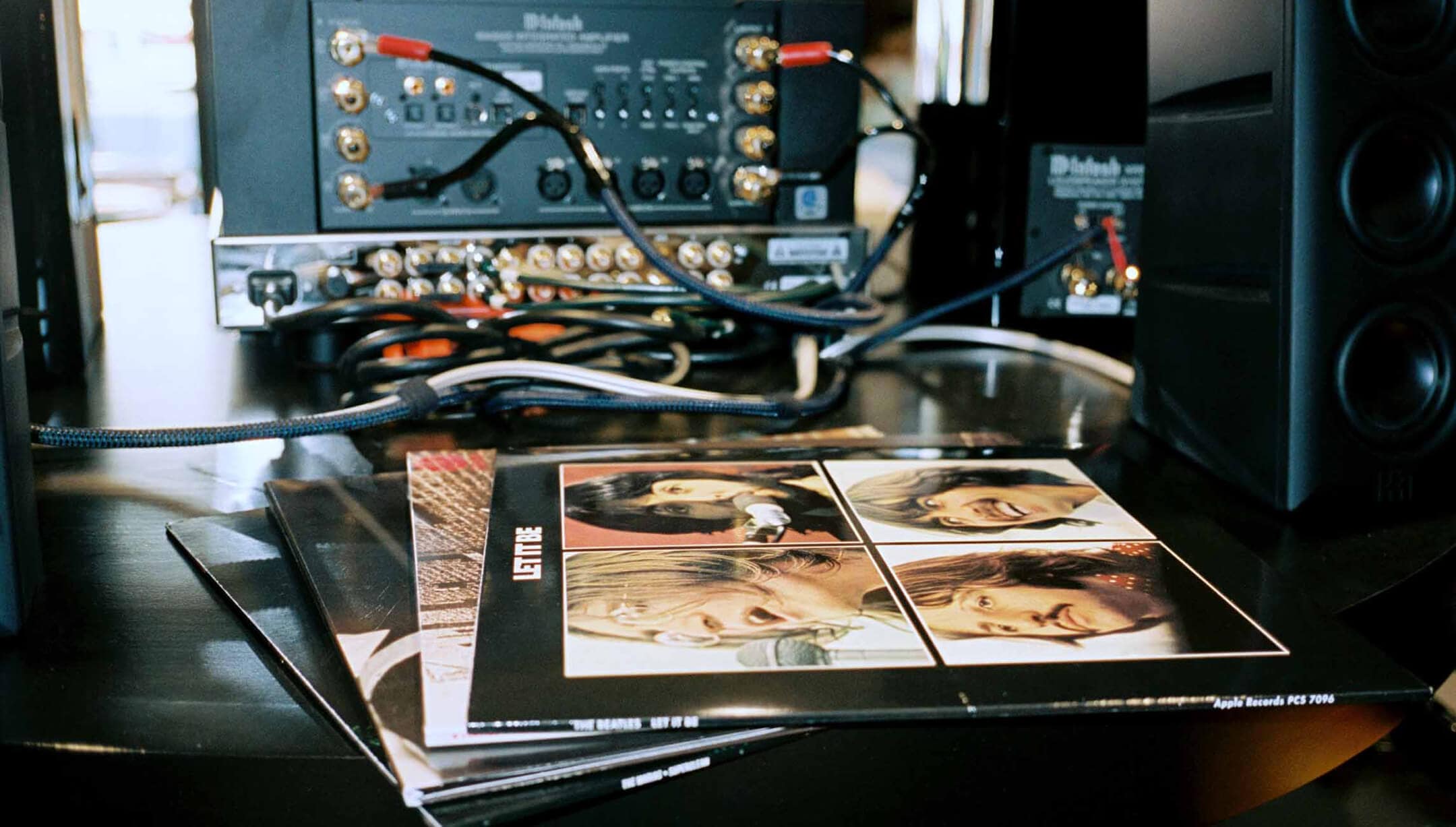
Take a trip to Hollywood, to experience the exceptional quality of McIntosh technology.
It is that open-mindedness that makes Supervinyl a different kind of record store, which makes sense given that Barry is a different kind of record store owner.
At Supervinyl, artists like Lana Del Rey and Billie Holiday, The Rolling Stones and Howlin Wolf, live alongside those that inspire them on the shelf. “In the end, it’s about the overall selection and I want that to be as unique as it can be,” says Barry. Rather than taking the position of an expert from whom people are fortunate to glean knowledge from, Barry has found himself in the enviable role of a superfan who is able to share his unbridled passion for music and quality audio equipment. “I just think about when I was growing up, I’d put on headphones and just sit through an album and it just blew my mind. But then you hear the same album on great speakers paired with a great amp, it just goes to another level, it's an entirely different experience.”
Barry set up Supervinyl to make a top tier listening experience easily accessible. The goal is to plant a seed in the mind of a listener who has only listened to these albums on a streaming service and ultimately, get them hooked on this entirely different sensory journey.
The whole venture is a gamble, with the payoff predicated on Barry’s passion for craftsmanship, whether in the music itself or the hardware it’s played back on, it hinges on connecting with a diverse audience. “People coming in have just been blown away by how good things sound. You put something up on the McIntosh turntable and songs completely come alive in an all-new way. I wanted to make the best possible record store that I could, the kind of place that you don’t want to leave.” So far things are looking promising, as Barry told us, “The initial feedback has been overwhelmingly positive.
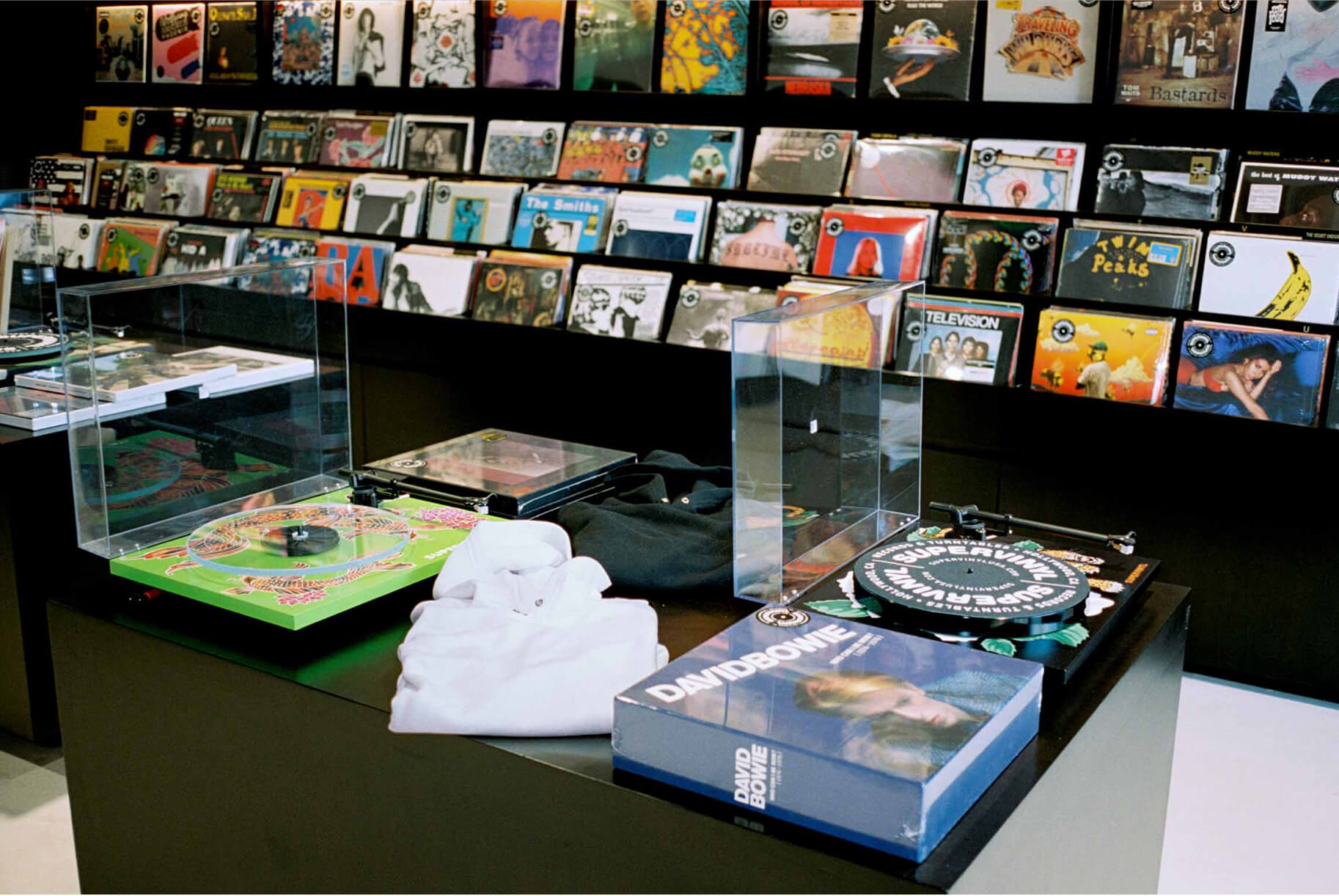
For a gift to remember, Supervinyl offers limited edition, hand-painted turntables by Los Angeles artists.
One customer told me that they sometimes have to dig for an hour and a half elsewhere to find what I have displayed on the wall here.” That’s a strong vote of confidence in Barry’s choices when it comes to curating the album selection, but he’ll be the first to tell you there isn’t really a method to the madness other than keeping an open mind. “I’m equally interested in reaching younger people that might not have ever listened to records before as I am in reaching people who are rediscovering what they used to have, but through new ears.” Contrary to the usual record store, Supervinyl is all about education instead of intimidation.
Barry’s mission is to offer anyone the chance to listen to an album they’ve never heard before on the best equipment he can get his hands on. This is a firm declaration that he is intent on being different. Certainly, Supervinyl is set up in a way that encourages people to stay awhile and immerse themselves in a uniquely satisfying way of hearing music. “It’s simple, I wanted a place where people could just sit, hang out and listen to music without the pressure to buy anything. Different speakers and amp combinations in the center of the store offer something new with each listen.” Barry doesn’t hold his tastes above anyone else's, he is simply a man on a mission to share what he’s passionate about and hopefully bring people into the fold along the way. As we were wrapping up our conversation, he dropped in one of his favorite quotes from the eternal guitarist Keith Richards who said: “When you buy a Rolling Stones record, you’re buying a piece of the band” and the same can be said for other albums at Supervinyl. For a fan, nothing is as satisfying than being able to say “I’m with the band” and in its own small way, that’s what owning a record affords you.
Words: Andrew Maness
Photos: Dana Boulos
Oliver Peoples and Barry Perlman
pair five vinyls with five frames.




